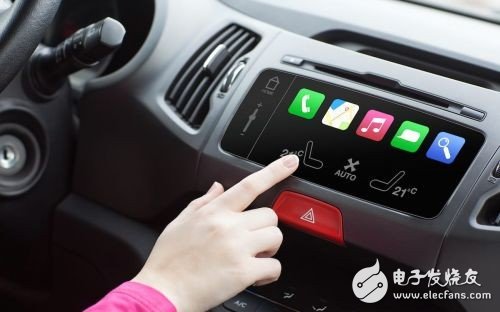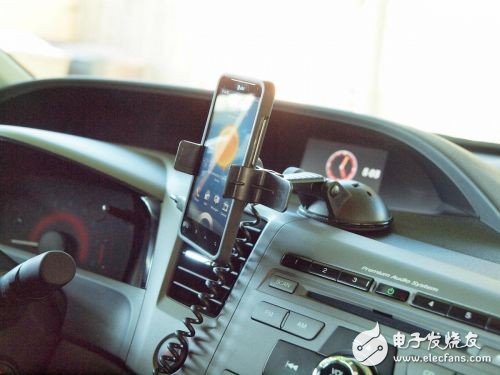Speaking of smart cars, the most representative statement is this. All along, the work done by car manufacturers and researchers is transforming cars into mobile phones that can be driven. Considering the car as part of the mobile Internet, especially one of the important entrances to the mobile Internet, is the current mainstream concept and practice in the industry.

How did the car network come about?
In 1886, the German Carl Benz put the internal combustion engine on a three-wheeled carriage, and the car was born. For more than 100 years, people have been using their imagination to transform their cars. For more power, people create turbocharger with imagination. For more comfortable driving, people create hydraulic torque converters to create automatic gearboxes. For more comfortable rides, people create imagination with more imagination. The more elaborate suspension, from leaf springs to torsion beams, multi-links, from electromagnetic suspensions to air springs, the imagination guides people as a means of transportation for people to move forward.
In the past 100 years, people's imagination and creativity have changed the body of the car. In addition to the vehicle itself, humans are not satisfied with boring driving, and the imagination allows people to install the radio into the center console of the car. Then from the radio to the cassette, to the cd machine to mp3 to navigation.
In fact, the car on the car is synchronized with other devices, the radio is moved from the bedroom to the car, as is the cassette and CD. And when people enter the era of PCs, smartphones, and mobile Internet. These things combined with the car to create a car network. The Internet of Vehicles is the result of the extension of the mobile Internet to the car and the combination of car use scenarios.
The car network has painted many years of big cakes, but car manufacturers are making dumplings.
Now, some people have begun to question this view.
Chinese manufacturers are still talking about the interaction between the car and the phone, a bit low.
In a recent sharing session of the interactive experience of the Internet of Vehicles, Executive Director of the Meihua Net Research Institute, Cheng Ran, quoted a foreign researcher as saying.
The crime of interaction
Seeing the car as part of the mobile Internet will inevitably lead to the preemption of the entrance and the competition for traffic. Just as the network terminals were transferred from PCs to smartphones, many people regard car intelligence as another revolution in the Internet. But in the three main technical paths of smart cars – electric cars, car networking and autonomous driving, the road of car networking is still going down.
From the point of view of the phenomenon, the competition of the Internet of Vehicles has penetrated from the high-end models to the low-end models. All kinds of car interconnect systems are flying all over the sky. It seems that all the cars running on the road overnight are all iPhones.
Without a car, I am embarrassed to drive on the road.
However, manufacturers are doing a lot of work here, but there is consumer dissatisfaction with various "cars." The operation of many in-vehicle interconnection systems is uncomfortable. Listening to the song, want to change the navigation destination settings? Exit from the music player interface, enter the navigation interface, stop the current navigation, re-enter the destination, start navigation... Count a series of interactive actions of input, selection, and determination, and wrestle with the screen of the car for a long time.
The interaction design is almost anti-human, and the function is often a bit lame. It seems that the car-connected system on the tall side often does not solve the following tens of dollars:

Mobile-car
How to get back the car internet system? Zhu Jiaming, director of product consulting at Faceui, which focuses on interactive experience design, believes that it is necessary to sort out the behavioral norms of human-computer interaction from the usage scenarios and user needs, thus enhancing the interactive experience of the vehicle.
Cheng Ran proposed that the interaction design should minimize the driver's distraction and design with the principle of optimal intuition. In other words, if you can use voice input, don't write handwriting plus pinyin; if you can use voice to tell, don't let people watch large sections of text. In addition, the efficiency of the system must be improved. First, it must be highly integrated with the in-vehicle system. Second, it must interact with the traffic information outside the vehicle in real time.
What kind of car network do we want?
Accelerating the layout of the car network is a good wish of car companies.
However, when this wish is fulfilled, it often becomes more and more apps to be added to the car. Audio-visual playback and navigation have long been a must-have application for car owners. Now, social software such as QQ and WeChat has become the target of car-connected systems. Many manufacturers, including BMW, are eager to put WeChat on their own cars.
The car is getting bigger and bigger and getting more and more bloated. This is a practice of making dumplings: all kinds of seemingly beautiful apps, all inclusive.
People are questioning:
Do we really need such a versatility when driving?
Say no need at all, certainly not sincere. After all, the mobile Internet has entered most of the scenes of life, and driving is no exception. How to meet the needs of mobile internet while maximizing security is exactly what the industry needs to think about.
Anyway, the phone holder can't be thrown now.
What are the benefits of car networking?
The Internet of Vehicles is to use the cooperation of various scientific and technological means, so that the LAN is formed in the car, the car and the car are connected, the car and the person are connected, the car and the road are connected, the car and the Internet are connected, so that the car becomes another Internet. The intelligent terminal, through the three steps of vehicle data collection - automobile network interconnection - cloud center control and dispatching, realizes the intercommunication of data of vehicles, people and roads, and finally realizes functions such as intelligent transportation, intelligent vehicles and intelligent driving.
It can provide accurate positioning for the car through the GPS global positioning system, and use the vehicle terminal to receive the information of the real-time intelligent transportation system, and also send the speed and position information of the car, and feedback the traffic congestion and speed of the road where the car is located. Provide real-time navigation for car owners, avoid congested areas and choose the best route. In addition, accurate car positioning allows the owner to know the location of his car, and directly plan the walking navigation route through the mobile phone map to guide himself to find the parking space. If the vehicle is hit by an anchor, a puncture, a battery, etc., it is necessary to let the relevant person find his own car.
For example, if there is an emergency traffic situation, such as a vehicle collision, reverse driving, illegal overtaking, etc., the Internet of Vehicles will issue a warning to avoid traffic accidents. The safety of drivers, pedestrians and cars is fully guaranteed by communication between the car and the car, between the car and the road, between the car and the pedestrian.
In addition, related companies are still developing the highest level of car networking use - driverless. It is understood that this technology is still in the field testing stage, and it takes time to apply it to practice.

Introduction
SCOTECH manufactures a full range of oil immersed power transformers including generator step up transformer, substation step down transformer, mobile Substation Transformer and other different types, our maximum capacity and voltage is up to 300MVA 330KV, with the advanced design and thorough quality management system, we had become one of the most reliable Power Transformer manufacturers in China. we do not compromise on the quality, we ensure that each one of our delivered units has passed the most strictly testing and that makes us confidently to provide the longest quality warranty to our customers. We export our power transformers to all major global markets.
Scope of supply
SCOTECH`s oil immersed power transformers Including generator step up transformer, substation step down transformer, Mobile Substation Transformer and other different types.
Voltage level: 132KV, 230KV, 330KV.
Rating level: up to 300MVA
Standards
SCOTECH`s oil immersed power transformers are designed and manufactured in accordance with all major international standards (IEC, ANSI, UL, CSA etc.)
Why SCOTECH
Long history- Focus on transformer manufacturing since 1934.
Technical support – 134 engineers stand by for you 24/7.
Manufacturing-advanced production and testing equipment, strict QA system.
Perfect service-The complete customer service package (from quotation to energization).
Power Transformer
Power Transformer,Liquid Immersed Transformer,Step Up Power Transformer,High Voltage Transformer
Jiangshan Scotech Electrical Co.,Ltd , https://www.scotech.com
